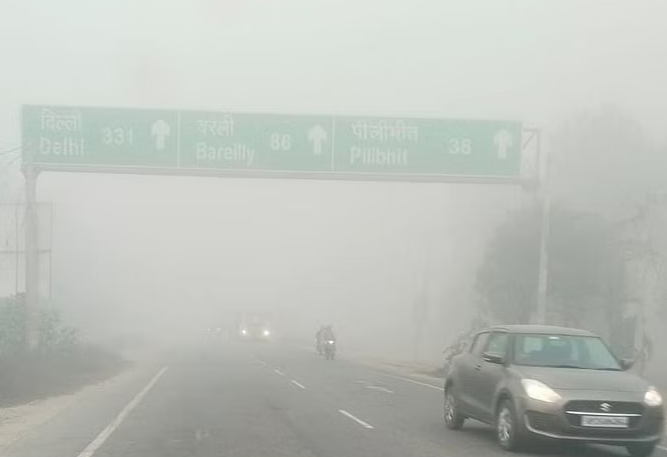
Delhi is once again enveloped in a thick blanket of smog due to changes in wind direction and reduced wind speed. The shift in weather has led to a significant increase in pollution levels, causing discomfort to people with burning eyes and difficulty in breathing.
Following the recent weather changes, some areas in Delhi-NCR may experience dense fog on Saturday morning, with clouds persisting throughout the day. There is a likelihood of a slight increase in morning temperatures. However, a drop in temperatures beyond Sunday is anticipated, according to the Regional Meteorological Centre in New Delhi. On Friday, the maximum temperature in Delhi was recorded at 23 degrees Celsius, which is two degrees above normal, while the minimum temperature was 6.2 degrees Celsius, one degree below normal. December is witnessing the second-lowest temperature of the month.
As per the weather department, Saturday may see partial cloud cover in the sky, with dense fog in the morning. The maximum temperature in Delhi is expected to be around 23 degrees Celsius, and the minimum temperature is predicted to hover around nine degrees Celsius. A moderate level of south-east winds at speeds of 4 to 10 km/h is expected in Delhi on Saturday. However, a shift in wind direction is forecasted on Sunday, possibly bringing cool air from the north-west. A decrease in temperature is anticipated due to the influx of cold air from the mountainous regions. The weather department has forecasted the continuation of foggy conditions in Delhi until December 28.
The national capital has transformed into a gas chamber once again, with air quality reaching severe levels in most areas. The change in wind direction and reduced wind speed has led to the formation of a thick layer of smog in the sky. The air quality index (AQI) in Delhi-NCR was recorded at 409 on Friday, categorizing it as severe. The pollution level on Friday surpassed that of Thursday, with the AQI being 48 points higher. The atmosphere remained hazy throughout the day, causing irritation to the eyes and respiratory distress. The AQI in the ITO area reached an alarming 450, well into the severe category. Several areas, including Shadipur, recorded AQI values beyond 400, falling into the hazardous category. The deteriorating air quality is expected to persist for three to four days.
According to the Indian Institute of Tropical Meteorology (IITM), the wind direction in Delhi changed from north-east to south-east on Friday, with wind speeds ranging from 4 to 8 km/h. Saturday is expected to witness south-east winds in Delhi at speeds of 4 to 10 km/h, while a change in wind direction towards north-west is anticipated on Sunday. Monday may bring westward winds at speeds of 6 to 10 km/h. These wind patterns are likely to contribute to the poor air quality in Delhi.
As per the Central Pollution Control Board (CPCB), the air quality in Delhi on Friday was severe in 24 areas, with the ITO area recording the highest AQI of 465. Other severely polluted areas included Shadipur (463), Nehru Nagar (462), Anand Vihar (454), Jahangirpuri (452), and Punjabi Bagh (449). Additionally, ten areas recorded air quality in the hazardous category, with Dwarka Sector 8 having the highest AQI of 399. The deteriorating air quality is a matter of concern, with expectations of the current conditions persisting for the next three to four days.
In terms of the air quality index, Faridabad in the NCR recorded the lowest pollution levels, with an AQI of 282, although it still falls into the poor category. Greater Noida recorded an AQI of 386, Noida and Ghaziabad had an AQI of 376, and Gurgaon recorded an AQI of 314, all falling into the very poor category.










